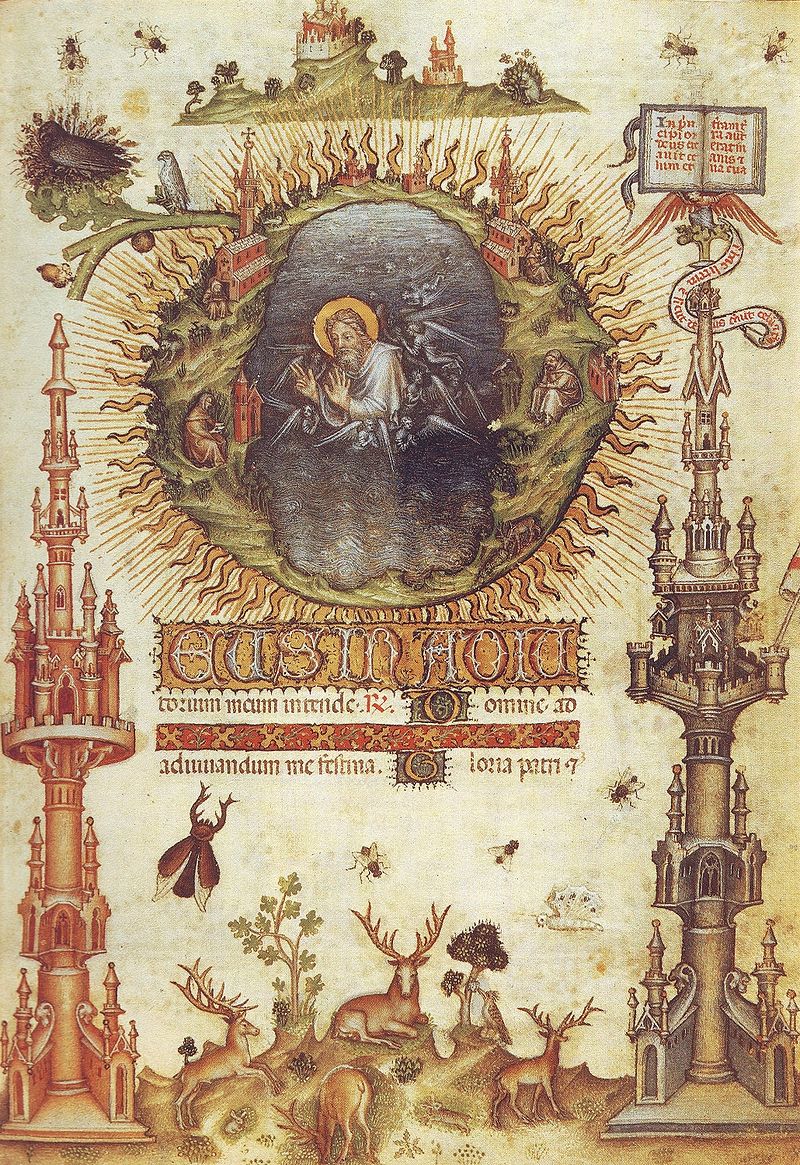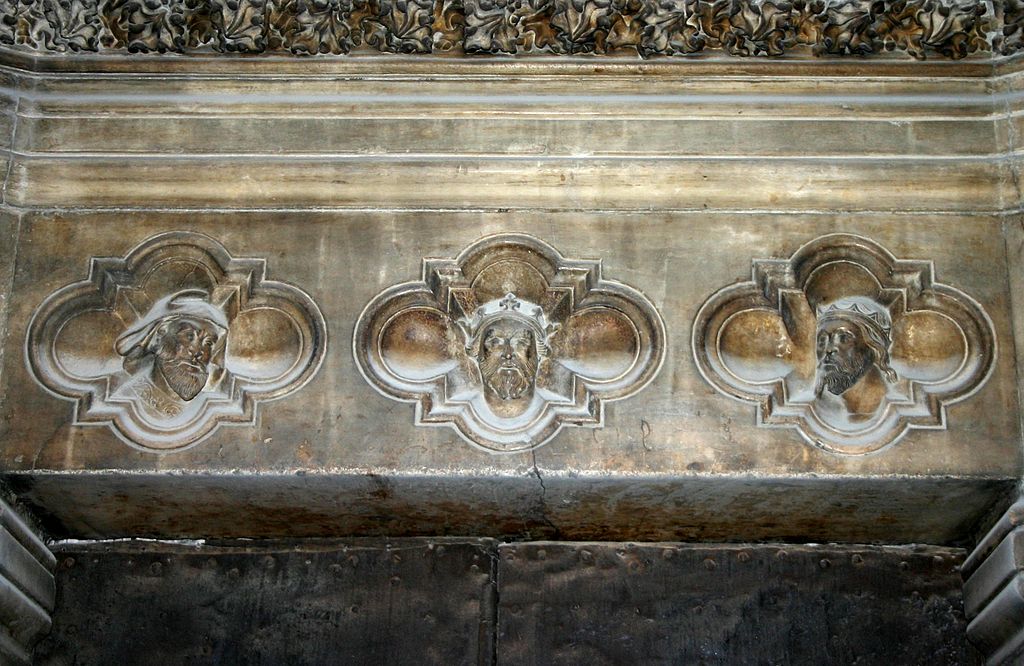Painter, architect and illuminator Giovannino de’ Grassi is first documented on 5 May 1389, when the Duomo of Milan bought a paintbrush for him. The document reveals that Giovannino was already an established artist by this point, but unfortunately we know nothing of his previous works.
Giovannino’s first known works are in a portfolio of drawings now in Bergamo. The portfolio contains drawings by various illuminators, bound together at a later date. The drawings of the first four pages have been attributed to Giovannino, who wrote “Johanninus de Grassis drew this” on folio 4v. Among his drawings we find carefully-rendered animals such as a bear, an ostrich, a deer and a leopard, some copied from life and some from contemporary treatises on natural history. These drawings were intended as patterns for painting, illumination, sculpture and metalwork, some of the many techniques in which Giovnnino and his workshop excelled. For example, some details of the frescoes in the Castle of the Mantegazza family in Campomorto (Pavia) are directly copied from the album.
In January 1390 Giovannino also started producing architectural and sculptural work for the Duomo. He started with architectural drawings; then in 1391 the Duomo bought him the tools and materials necessary to carve small sculptures, probably intended as a test of the master’s abilities. Giovannino’s sculptures were extremly successful, and he was soon commissioned to carve the doorway and a basin for the Cathedral’s southern sacristy.
On 12 July 1391 Giovannino was nominated had engineer and put in charge of the Duomo’s construction, a respected and well-paid role. At the time of his nomination the Cathedral’s construction had come to a standstill as no agreement could be found on the design of the building’s elevation. The Italian architects in charge of the structure proposed a squat structure similar to local models, while the Gothic masters called from Germany and Northern France to give their expert opinion argued that a low structure was not structurally sound and that the building had to rise much higher. Giovannino realised several designs for the Duomo’s elevation, including one based on geometric ratios and elaborated in collaboration with mathematician Gabriele Stornaloco.
In the following years Giovannino continued to oversee the Duomo’s construction and to carve sculptures for its decoration. The Duomo’s account books record that Giovannino travelled frequently between Milan and Pavia, especially after 1395. This suggests that he frequently worked for the Visconti family, the rulers of the Duchy of Milan. For them, Giovannino realised both frescoes and metalwork.
Reference: Marco Rossi, “GRASSI, Giovannino de’,” Dizionario Biografico degli Italiani , vol. 58 (2002), http://www.treccani.it/enciclopedia/giovannino-de-grassi_%28Dizionario-Biografico%29/
Model Book, 1380s, manuscript (Ms. VII. 14), 260 x 185 mm, Biblioteca Civica, Bergamo. Source: Web Gallery of Art.
Model Book, 1380s, manuscript (Ms. VII. 14), 260 x 185 mm, Biblioteca Civica, Bergamo. Source: Web Gallery of Art.
Tacuinum Sanitatis, 1390s, manuscript (Ms. 459), biblioteca Casanatense, Rome. Source: Web Gallery of Art.
Visconti Hours, c. 1389, manuscript (Banco Rari 397), 247 x 175 mm, biblioteca Nazionale Centrale, Florence, featuring a portrait of Giangaleazzo Visconti. Source: Wikimedia Commons.
Visconti Hours, c. 1389, manuscript (Banco Rari 397), 247 x 175 mm, biblioteca Nazionale Centrale, Florence. Source: Wikimedia Commons.
Portraits of Prophets, Portrait of the southern sacristy, MIlan Cathedral, c. 1393. Source: Giovanni Dall’Orto on Wikimedia Commons.
Gabriele Stornaloco’s design for the Duomo of Milan, redrawn by Luca Beltrami in 1895.





